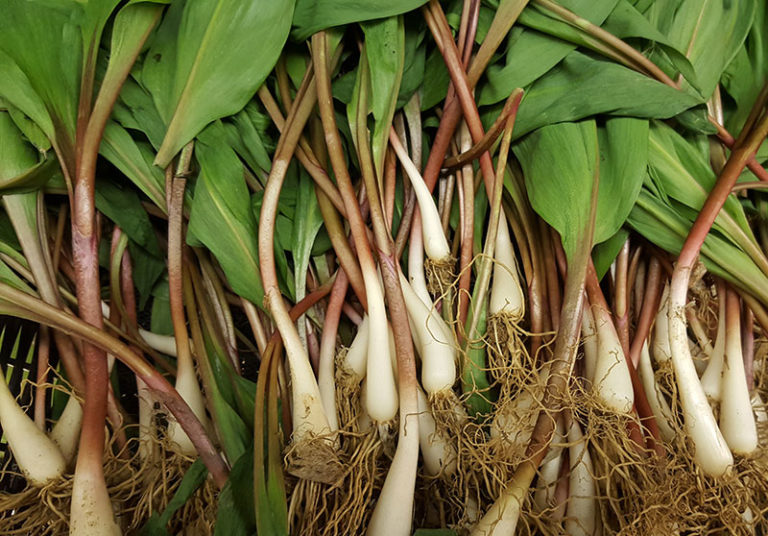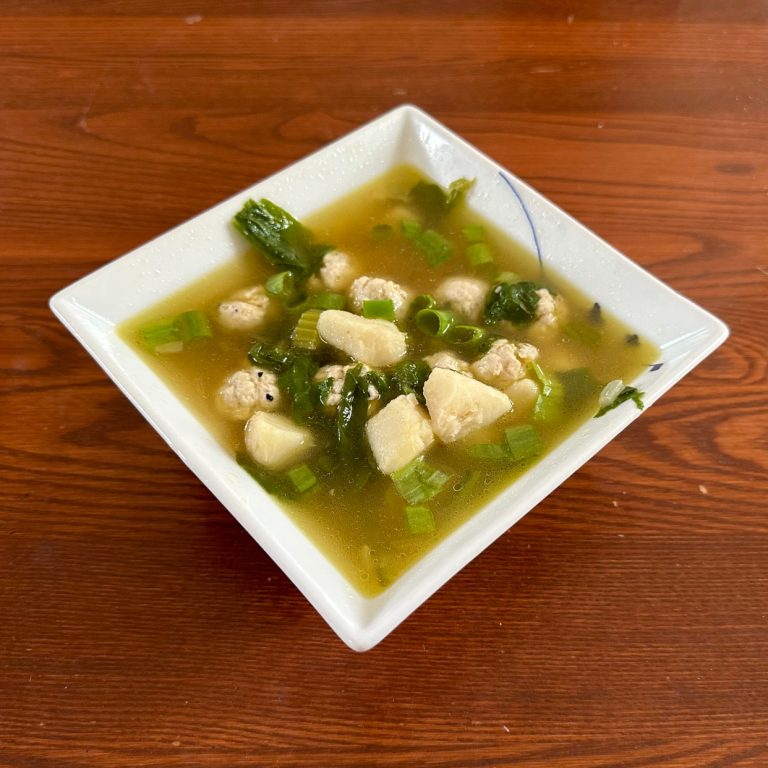This is Michael from the front-end here once more to share my experience with another unique piece of produce that you may not have tried before. This week I did a bit of an experiment to find out just how gooey okra is and whether or not that’s really a bad thing.
What is Okra?
You may have heard of okra before, but if you’ve never spent much time in the South, you may have never tried it before. Okra usually comes as long, thin green (or rarely red) pods filled with small off-white seeds. It’s most commonly known for its characteristic goo.
Okra is a bit of a mysterious plant. It has been cultivated by several cultures for thousands of years, but best guesses say it originates from East Africa in or around the region of modern-day Ethiopia. Starting in the 13th century, okra quickly began spreading north around the Mediterranean Sea and east all the way to India.
In most regions, okra was primarily used as a stewing ingredient or as a thickener in soups, but in the mid 19th century, frying okra gained a surge of popularity in the American South.
Recipes
This week, I wanted to do a little experiment. People often say that they don’t like the sliminess of Okra, so I decided to see which cooking method provides the least slime. I ended up trying two different directions of sliced roasted okra as well as battering and frying it.
Overall, I found the taste of okra to be mild and earthy. It’s a bit like other softspoken vegetables like eggplant, in my opinion. Where it really shines is the texture. When roasted or otherwise cooked at a lower temperature, the okra becomes very tender in a very unexpected way.
As I mentioned, okra is also often used in soups and stews such as gumbo. I figured it would be better to start small just to get acquainted with okra on its own before moving on to something as complex as that.
Oven Roasted Okra
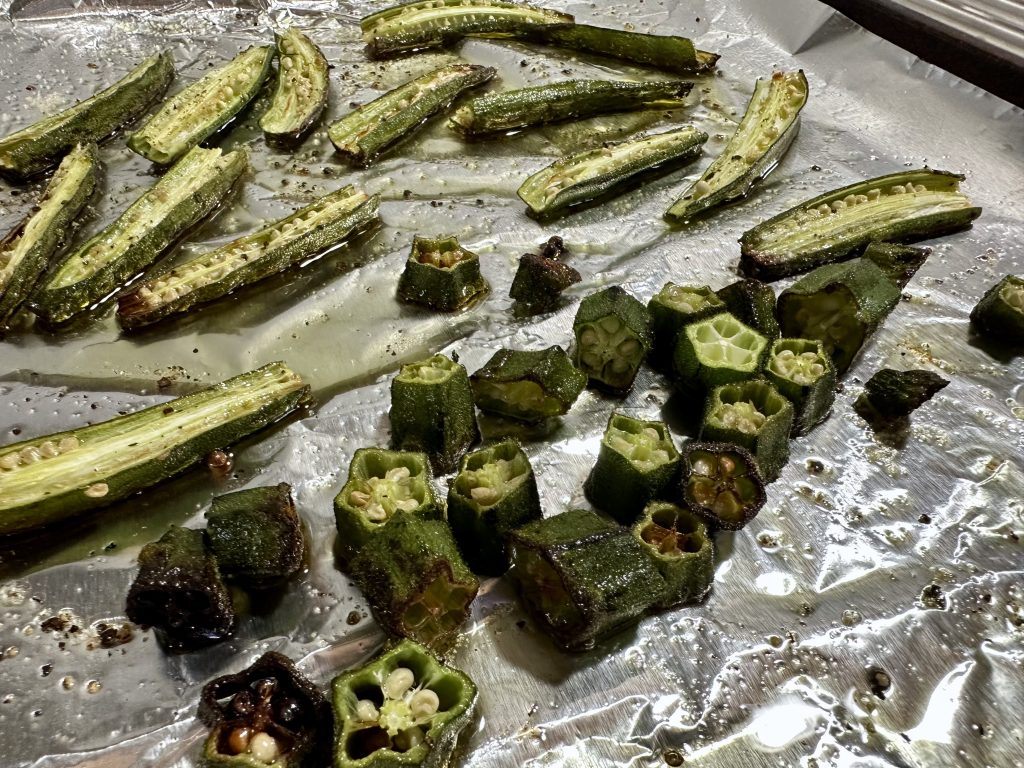
This is a simple recipe that you can use for roasting most vegetables, but my main purpose for using it was to see just how slimy okra really is and what you can do about it.
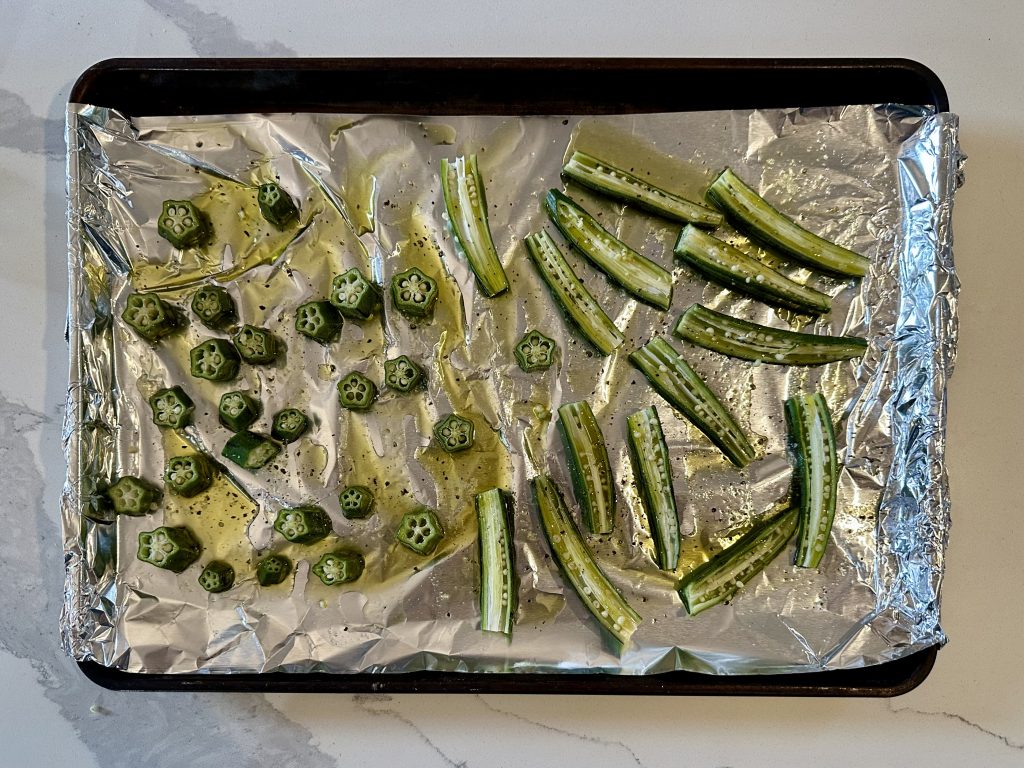
Instructions
- Preheat oven to 425.
- Prep a baking sheet. I like to line it with aluminum foil to make cleanup a bit easier.
- Slice your okra. Remove the stems and the thin tips. From here, you can either slice them either lengthwise, creating strips, or you can slice them into roughly ½” disks. The strips tend to be a bit slimier since they don’t naturally drain, but my mother and I actually preferred them this way. A little goo never hurt anyone.
- Arrange okra on your baking sheet in a single layer. Drizzle with olive oil and sprinkle with salt, pepper, and any other spices you want to include. Toss lightly to coat the okra.
- Place in oven for 10 to 12 minutes. You’re looking for the edges of the okra to start to brown, but you don’t want much noticeable charring.
Slicing the okra into disks cuts the slime factor to barely noticeable. Still, my family actually found the slight gooeyness quite endearing, so I’d highly recommend giving both a try and seeing which you personally prefer.
Fried Okra
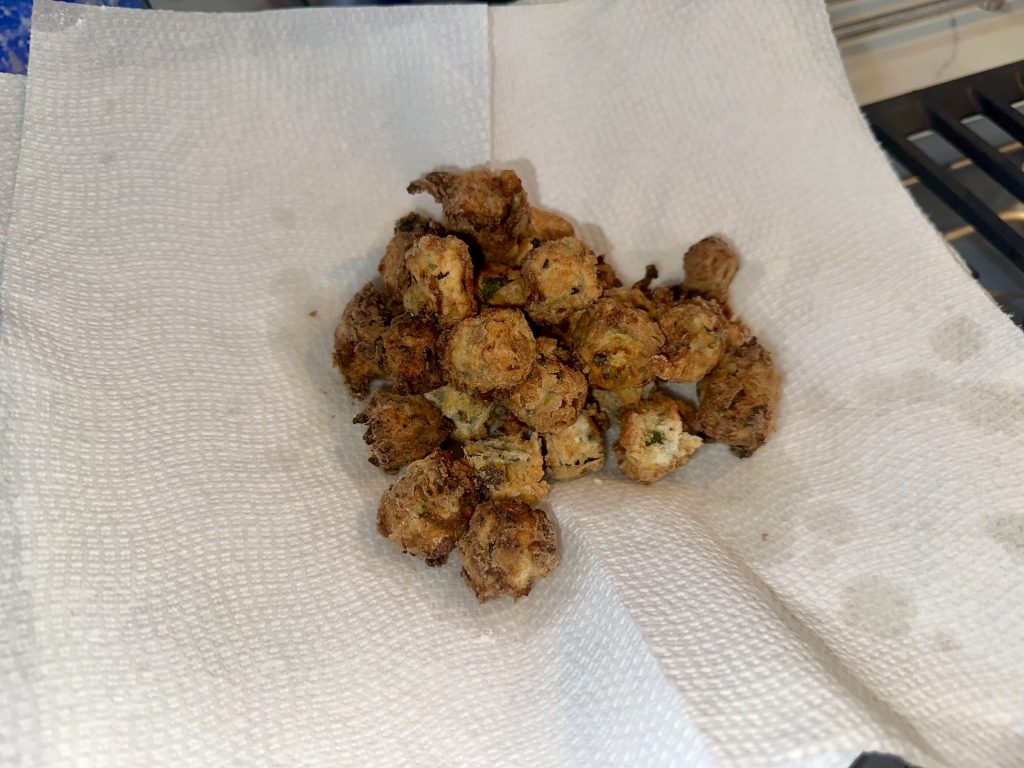
So, I had never fried food like this before. It seemed a bit overwhelming at first, but after doing a bit of research, I think a vegetable like okra is a great place to get started. The only real consideration is what oil to use. You need to use an oil with a high smoke point since we need it extra hot. I used vegetable oil, but something like canola oil, or refined avocado, peanut, or sunflower oil should work just as well.
Ingredients
- 1 large egg
- 1 cup flour
- ½ cup cornstarch
- 1 tsp salt
- ½ tsp black pepper
- ¼ tsp cayenne pepper powder
- Oil for frying
Directions
- Fill a small pot with oil and place over high heat. I used 1 quart of oil in a 2-quart saucepan. You just need enough oil to create around 1½-2” of depth.
- Slice your okra. This is the same as for roasting, but I chose to stick to disks.
- Combine your egg in a bowl with a pinch of salt, then whisk. Add your sliced okra, toss to cover, and let soak.
- Combine your flour, cornmeal, the remainder of your salt, black pepper, and cayenne powder.
- Wait for the oil to heat. If you have a good thermometer, you’re looking for 375, but if you don’t, you can test it by adding a pinch of your dry powder mix. If it quickly fizzes away, then you should be good to go.
- Add soaked okra to your breading. You want to get as much of the excess egg off as you can. Once the okra is coated, you can add it straight to the oil. I only fried about 4-6 pieces at a time because you want them to be able to float freely. After a minute or two, when the batter is golden yellow, use a slotted spoon or slotted ladle to transfer them to a paper towel-lined dish.
Generally speaking, any high-temperature preparation like frying helps cut down on the sliminess of okra and it becomes a nice crunchy treat.

